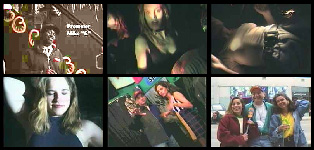The Movie: RTD Right To Dance

'Now what I contend is that my
body is my own, at least I have always so regarded it. If I do
harm through my experimenting with it, it is I who suffers, not
the state.' - Mark Twain
From the year
between 1992 to 1993, a great underground rave culture began to
transform in the City of Denver, Colorado, USA. The promoters
responsible for this happening were Mike “E”, The
Messiah, and The Energy Posse so called names that they went
by.
Chuck Harris musically became
exposed to it and witnessed a cat and mouse game between the
promoters and the heavy handed Denver Police. Chuck Harris decided
that this was an historic story happening that needed to be
documented and so he filmed 42 hours of footage over that one year
period. It comes to no surprise that in the end, the Denver Police
had won, but not without a documented happening event. This is the
story of the promoters and the ravers of the metropolitan City of
Denver. It was their right to dance.
There are TWO free videos available now for download:

This documentary was video taped in "
Cinema Verite" style. Which means it was shot as it happened without any special lighting or editing effects. It is just as it happened.
»»
Watch the Trailer Here ««

Alice in Raveland
Details:
The first Rave we started to video tape was a Rave called Alice in Raveland. The promoter Mike "E" opened the door for us to begin documenting this cat and mouse game between the Ravers and the Denver police. When we arrived early at the Rave, the police had already infiltrated the location and shut it down. Promoter Mike "E" was determined not to be beat by the police so he decided to make another map point, and change the rave location to the warehouse which he and his artist roommate "Vile" lived. Surrounded by consistent police surveillance and driveby's, the Rave went on without a hitch, but for only the people who knew.
The RTD series was shot over a period of a year from 1992 to 1993 when the rave scene began to flourish in Denver as well as throughout the world, and became a 7 part series. Part 7, is broken into three parts, a, b, and c, because this was the ultimate Rave located on a private 5200 acre ranch in Boulder which lasted until 10am the following day. All parts are roughly an hour each.
Also read the the Westward news article written at the time of these events.

»» Watch the Alice In Raveland Movie Here ««
Playing Time: 1hr - 200MB - Part 1 of 7

The Road to Eden
Details
The ultimate rave in the mountains of North Boulder on a 5200 acre private ranch. Far removed by the hassles by the police, promoters Mike "E", Messiah, and The Energy Posse all team-up to present the ultimate rave. This is the first Part of a three part series of the rave Eden. This documentary is the first part of the trip-up to Eden from Denver to North Boulder.The three part series includes: Part 7a = THE TRIP UP - Part 7b = THE SET-UP and EDEN RAVE - Part 7c = THE MORNING HOURS and BREAKDOWN. Collect all three!
The RTD series was shot over a period of a year from 1992 to 1993 when the rave scene began to flourish in Denver as well as throughout the world, and became a 7 part series. Part 7, is broken into three parts, a, b, and c, because this was the ultimate Rave located on a private 5200 acre ranch in Boulder which lasted until 10am the following day. All parts are roughly an hour each.

»» Watch the Trip Up To Eden Movie Here ««
Playing Time: 1hr - 200MB - Part 7 of 7a,b, and c.
Also read the the Westward news article written at the time of these events.
PageTOP ^
Disclaimer
Cinema Verite
A movie that shows ordinary people in actual activities without
being controlled by a director.
"I don't know what truth is. Truth is something unattainable.
We can't think we're creating truth with a camera. But what we
can do, is reveal something to viewers that allows them to
discover their own truth." — Michel Brault
REALISM
Realism is the artistic
attempt to recreate life as it is in the context of an artistic
medium. The artist’s function is to report and describe
what he sees as accurately and honestly as possible. Realism
began as an artistic movement in the 18th Century in Europe and
America. It was a revolt against the conventions of the classic
view of art which suggested that life was more rational and
orderly that it really is. It was also a revolt against the
romantic traditions in art which suggested that life was more
emotionally satisfying that it really is. Realism tries to
portray life as objectively as possible. The realistic artist
tries to keep his own preconceived notions out of his art but
rather to just report what he sees as accurately as possible,
“warts and all.”
Realism developed historically in tandem with
the rise of modern science with its emphasis on observation,
accurate recording and theorizing about natural phenomena. It
also developed at the same time that writer started to have a
social conscience, seeing the evils of society and calling for
reform. Some of the leading French writers in the realistic
tradition were de Balzac, Flaubert and Zola.
Realism was a broad spectrum movement
involving painting, literature, drama in several European
countries. Some of the leading French realist painters were
Corat, Courbet and Daumier.
When the 20th century arrived with the
invention of the moving picture camera, one of the first motion
picture ever made was titled “Workers Leaving the Lumiere
Factory” by the French film pioneers, the Lumiere brothers.
This film was one of the first realistic films ever made because
its subject matter was exactly what the title stated. This was in
direct contradistinction to another French film of the period
“Trip to the Moon” which was an overt fantasy and one
of the first science fiction films ever made. Since its
inception, the world of cinema has descended from these two
progenitor film approaches:
Realistic films that try to show the world as
it actually is, and Fiction/fantasy films that try to present the
artist’s imaginative view of the world in an entertaining
manner.
CINEMA VERITE
Cinema Verite,
literally film truth, was a style of film making developed by
French film directors in the 1960’s. Their production
techniques did not depend on star quality actors, sets, props,
casts of thousands, special effects and big budgets which was the
trend in Hollywood films then as now. The cinema verite directors
used non-actors, small hand-held cameras, and actual homes and
surroundings as their location for a film. One of their
production techniques was to tape record actual conversations,
interviews and statements of opinion made by real people. Then
they would find pictures to illustrate the actual sound
recordings. The final production was put together in the editing
room (which is also true of fiction/fantasy films). Cinema verite
was characterized by the use of real people (not actors) in
unrehearsed situations. Filming was done with unobtrusive cameras
so the subjects of the film would forget the presence of the
camera and just be themselves. The filmmakers goal was to show
life as it really is using the film as his artistic medium. Sets
and props were never used and everything was shot on location,
often with a small, portable camera. The camera could be taken
into peoples homes, automobiles, and other places where the
heavy, bulky feature film cameras could not easily go.
Some famous French examples of cinema verite
are “Chronicle of a Summer” (1961) by Jean Rouch and
“Le Joli Mai” (1962) by Chris Marker. A famous French
film director who was influenced by cinema verite was Jean-Luc
Godard. His first feature film “Breathless” (1960)
was shot without a script. He improvised the film as he went
along, sometimes writing dialogue and rehearsing actors on the
spot just before he would “roll cameras for a
take.”
Cinema verite stands at the other end of the
spectrum from the Hollywood feature film. The typical Hollywood
film has a complete script that has been through several
revisions, movie star actors with million dollar salaries, costly
special effects, expensive sets, props and locations, and a
multi-million dollar budget to pay for it all. The producers of
such films would attempt to attract a huge mass audience. To get
their money back, the producers and the financiers mount an
equally expensive and wide-ranging promotional campaign complete
with newspaper, radio and television advertising.
Not so with cinema verite. Films made in this
genre usually have none of the above. Cinema verite films are
usually shot with natural light, easily portable, inexpensive
equipment, hand-held cameras, actual locations, real people (not
actors) and a relatively small budget. The films are usually shot
without a script and assembled later in editing.
But the key difference between the
Hollywood-type fiction/fantasy film and the cinema verite film is
the respective goals of each. While the Hollywood film is usually
aimed at creating a fantasy of some kind which will be
sufficiently attractive to the mass audience that millions of
them will come to the movie theater and pay enough admission
charges so the film can make back its multi-million dollar budget
and make a profit on top of that, the cinema verite film is aimed
at showing the mundane truth of peoples’ everyday lives and
the social context in which they live their lives. Cinema verite
is part of the broader artistic tradition of realism and the
cinematic tradition of documentary film making. These realistic
traditions in are aimed at showing man’s real situation in
life rather than at providing him with an escapist fantasy
experience which and audience will enjoy watching and will pay
for by coming out to the movies in very large numbers. Realism
and cinema verite try to show man as he is and the world as it is
because the film maker often has a social conscience and
sometimes a political agenda. His purpose is to enlighten his
audience, to show them the truth a he sees it, so they will have
the information they need to live better lives or to, in some
cases, to take political action to right the wrongs the film
maker often exposes.
It is in this proud tradition of realism and
cinema verite that Chuck Harris [chazzsongs], a modern video
producer/director, presents his realistic videos about Art,
Music, and Life. As a serious musician and producer, he wants to
show his audience what really went on, such as with the Rave
scene in Denver which tried to flourish, with his personal
photography, and with his interviews of aspiring artists and
their performances.
PageTOP ^
Disclaimer
Rave Heart
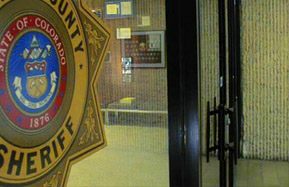
Sheriff's departments across Colorado choose not to remain silent about
raves.
Westword.com August 24 - 30, 2000
by Laura Bond - Angela Harris contributed to this story.
Rocky Mountain News society scribe Dahlia Jean Weinstein
recently made a discovery that doubtlessly caused followers of the lively local
electronic dance music' scene to accidentally let the baby pacifiers in their mouths
drop to the floor along with their jaws:
Apparently, Weinstein reported in a full-color spread in the Rocky's July 30
Spot-light section, large numbers of kids today are spending their weekend dollars at
raves, "all-night subversive dance fests" advertised through intricate variations on
word-of-mouth.
But as any self-respecting raver knows, the events' journeys aboveground and out of
the abandoned supermarkets, bomb shelters, warehouses and hen houses to which
they in all of their flashing, gyrating X-ing beauty were previously relegated began
about five years ago.
In fact, KTCL FM's recent "Rave on the Rocks" took place on the stage at Red Rocks,
a locale that is as aboveground as you can possibly get.
While Weinstein's observation that raves are happening more visibly and with more
and more frequency may have been news to her editors, it certainly wasn't a
revelation to a state of Colorado lawmen, many of whom have to regard raves as
neon-lit havens of drug binging and alcoholic excess. And a string of
minor-rave-related snafus over the past year hasn't helped matters: In March, the
principal Rupert High School in Colorado Springs was sucked into authorizing a widely
advertised rave that drew 3,000 kids and had school maintenance men scraping chewing
gum off a waxed floor for days; last month, a teenager from Gil, Wyoming,
disappeared after attending a rave in Vail was later discovered wandering around
downtown Denver a haze; earlier this month, an Aurora rave attended by more than
6,000 people drew officials from seven lawenforcement agencies and led to more
than thirty arrests, many of them drug-related; and in June, sheriff officials
in Elbert County were ranting about a rave that wiped out the department's overtime
budget for the entire year. More than 3,000 people showed up for the party near the
town of Kiowa, and seven were arrested.
So as raving in Colorado continues to develop as a popular sport (second, perhaps,
to screaming at the TV during Denver Broncos games), law enforcement becomes more and
more prepared to take on the sweaty masses.
What's an aspiring promoter to do if he wants to throw an event with no trouble
from The Man? First of all, before he rents a building, prints fliers, imports a DJ
from European parts unknown and springs for a truckload of glo-sticks, he's got to
get the right permits, just like anyone else who wants to put on a public event.
After that, he might want to choose his county carefully.
Westword recently polled officials from sheriff's departments in six counties
(there would have been seven, but Arapahoe County didn't respond to our inquiry) to
help you plan a rave that will draw minimal law-enforcement interference. Their
responses are some mad phat shit, yo!
Adams County
"Raves are allowed with strict regulations; therefore, not many raves are held in
Adams County. But our policy is not to stop raves because of people's right to
assemble. But if they do host one, the rules are that they must meet zoning
regulations, there must be no serving of alcohol without a permit, they must address
the issue of parking, there must be crowd restrictions, and they must obtain the
proper permits: zoning and planning...But raves can create problems because of the
crowds that they attract and the dope and drugs used." - Mark Nicastle, Adams County
Sheriff's Department
Boulder County
"There is nothing especially addressed for raves. [Rave promoters] need to obey
all of the laws and regulations that are on the books for any public event. And it
depends on where it is. They've got to have the permission of the property owners if
it's held on private property. They cannot create fire hazards or traffic problems.
If it's in a commercial building, adhere to fire codes, obtain the proper permits.
Everybody has a First Amendment right to assembly. They [rave promoters] have got
that going for them." - Sherifl George Epp
City and County of Denver
"We've had problems with 'em [raves] in the past. Back before LoDo was developed,
we used to have trouble - people throwing events in all the old warehouses. But we're
not in a position to create policy regarding raves. We enforce laws and look out for
any criminal activity that takes place. We respond as needed. There are agencies that
deal with issues like liquor licenses for people who are trying to put on legal
public events. But, in my opinion, those events [where a permit is obtained] are not
something that someone would really call a rave. A rave is nothing more than a big
house party. No permit, just a bunch of people. That's a violation of city ordinance.
Anytime you provide a place for dancing or entertainment, you have to follow certain
codes. We respond as needed." - Dan O'Hayre, Division Chief of Patrol, City and
County of Denver.
Douglas County
"We never had any here. There were a couple-planned here, and they never
materialized, so we do keep an eye out. Our attitude is that it's a foregone
conclusion that it would be foolish to try to stop them, because they are going to
happen. If they are legal and the [promoters] have licenses from the zoning people in
Douglas County, we'll enforce whatever laws apply. Drug laws, alcohol laws.
Obviously, if we get wind that they are not being held legally, we will go in there
and shut them right down. Basically, we allow things that are legal, and we don't
allow things that are not legal. I don't really have a stance one way or another.
Whether they are good or bad or right or wrong, if laws are being broken, we will
respond accordingly." - Captain William Walker, Operations Commander, Douglas County
Sheriff's Department.
Jefferson County
"To my knowledge, at least to date, we haven't had a lot of experience with raves
in Jefferson County. The problem[with raves] is that they usually try to set them up
without the ticket buyers even knowing the date or time of event, then posting it on
a web site. The current posture toward raves is that we're not going to change our
approach from any other large gathering. When it becomes a problem, where law
enforcement has to interfere, we will do so. If there was to be one in Jefferson
County, I would guess that out intelligence people from our task force would probably
put a couple of people out there in plain clothes, undercover, at the actual location
where the party was happening, to be able to gauge what was going on. We would
probably have an extra patrol of one or two units that wasn't necessarily at the
site, but we would make them aware that there was a special emphasis on this event.
So we could know what the heck is going on. I mean, if someone was having a wedding
in the middle of nowhere with 500 people, we wouldn't care. But part and parcel to
the rave scene is that you've got like 500 people and it could escalate into a really
bad problem. If you look at the Web sites for some of these things, they put up the
red flags themselves. Talking about large groups of people [attending], and they're
not putting the date out, so that law enforcement dosen't know what is going on. We
want to know just what the heck is going on." Lieutenant Phil Dominico, Jefferson
County Sheriff's Department
"My objection to the raves that were happening was the large amount of narcotic
activity - GBH, ecstasy. Combine that with the age of the ravees, and it causes great
concern. Everyone has the right to dance and listen to music and have a good time.
But the narcotic situation seems to be a big part of it, and the age of the attendees
is a problem. My concern over raves is basically just public safety issues:
What are you going to do for parking? What sort of health facilities are
available? A lot of the youngsters that attend these things become dehydrated from
dancing. And if you re thirty' miles up a canyon or somewhere in the middle of
nowhere, how do you get help?
"We had the Bongathan out here - remember that? Yeah, that was my county, too. And
we tried to send a message then that we do not like this type of illegal activity. If
you want to come up here and have a clean party, a fun party, fine. Work with us. But
I am against the underground nature of these things. The way they don't notify these
people of these events until the day of, it's because they anticipate a lot of
illegal activity and don't want law enforcement present. Well, I'm going to be
present, and I'm going to stop it." Sheriff James A. Alderden
Something Wicked This Way Comes
These cops have a beat, but can you dance to it?
Continued by Laura Bond
|
|
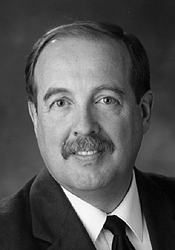 |
|
Alderden
|
|
|
 |
|
Epp
|
|
|
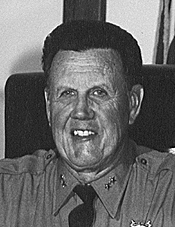 |
|
Shearer
|
|
|
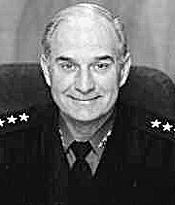 |
|
Zotos
|
|
|
|
Maybe law enforcement's resistance to the idea of increased rave activity on the
Front Range is due to a simple matter of taste (and a generation gap). After all,
sheriffs are people, too, and they just might find the events less threatening if the
music wasn't so strange. (Arapahoe County Sheriff Patrick Sullivan Jr.
recently described it as "techno-rock music" with a mixture of bemusement and
confusion that sounded about as natural as Peter Jennings's coverage of Rage Against
the Machine's appearance outside the Democratic National Convention.) With this in
mind, we asked some of our favorite Boys in Brown to name a few of their fave songs
and artists. The wise would-be rave promoter might consider asking his DJ to spin a
few of these picks alongside tracks from BT and Aphrodite. Who knows? It might end up
as some some wicked science. -- Bond
Sheriff James A. Alderden, Larimer County
Favorite artist: Mostly country-Western artists, Roy Orbison
Sheriff John Anderson, El Paso County
Favorite artist: Enya
Current favorite CD: Shepherd's Moon
Twenty years ago, listening to: Simon and Garfunkel
Likes to dance to: Not a dancer
Favorite song of all time: Lee Greenwood's "Proud to Be an American"
Sheriff George Epp, Boulder County
Favorite artist: Buddy Holly
Sheriff Don Krueger, Clear Creek County
Favorite artist: Willie Nelson
Current favorite song: Lewis Calvin DeWitt's "Flowers on the Wall"
Twenty years ago, listening to: Country
Likes to dance to: Latin, country
Favorite song of all time: Willie Nelson's "Always on My Mind"
Sheriff William T. Shearer, Adams County
Favorite artist: Mariachi Vasquez, Selena Quintanilla Perez
Current favorite CD: Como La Ves, Mariachi Vasquez
Twenty years ago, listening to: Country-Western
Likes to dance to: Latin, country-Western
Favorite song of all time: "The Star-Spangled Banner"
Ari Zavaras, Manager of Safety, City and County of Denver
Favorite artist: Elvis
Current favorite CD: The Best From the Past, Elvis Presley
Twenty years ago, listening to: Elvis and rock and roll
Likes to dance to: Mood music
Favorite song of all time: Elvis Presley's "The American Trilogy"
Sheriff Steve Zotos, Doulgas County
Favorite artist: Tchaikovsky
Current favorite CD: Creedence Clearwater Revival, Creedence Clearwater
Revival
Twenty years ago, listening to: Creedence Clearwater Revival
Likes to dance to: Rock and roll
Favorite song of all time: Tchaikovsky's 1812 Overture
Doesn't like: Country-Western and rap
- End -
PageTOP ^
Disclaimer






